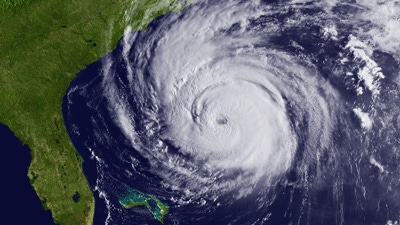September 2, 2010

As of 9 a.m. EDT, Hurricane Earl has been downgraded to a Category 3 hurricane and appears to be headed for a brush with the northeast North Carolina coastline.
Earl, with winds still in excess of 140 mph, could wreak havoc with soybeans and cotton, both of which are well ahead of typical harvest dates.
Farmers in the upper northeast of North Carolina are no strangers to hurricanes over the years, but storms have largely bypassed the area recently.
Crops from coastal areas around Washington, N.C., up to the Northern Neck of Virginia have been affected to varying degrees by record heat and localized intense drought. The overall impact has been to speed up crops, narrowing the harvest window and generally creating time problems for farmers.
Hurricane Earl will only accentuate those problems. Unusual August rains have helped alleviate some of the fears of yield loss in the area, but will contribute to problems created by heavy rainfall expected from the big storm.
Information as to what course Earl takes isn’t as precise as growers would like. "There is still concern that this track, the core of the storm, could shift a little farther to the west and have a very significant impact on the immediate coastline. Our present track keeps it off shore, but you never know," National Hurricane Center spokesman Dennis Feltgen said.
Waiting, hoping
“We hope Earl does exactly what the weather forecasters say it’s going to do, but it won’t take much movement our way to cause real problems for our farmers, says Pantego, N.C., grower Gary Respess.
“It’s already been a wild year here, we just finished picking some early cotton and we harvested some of our soybeans in August. The hurricane is just one more adventure for this cropping year,” he adds. In terms of getting ready for a hurricane, it’s a helpless feeling says Southeast Virginia consultant Wendell Cooper. “There’s just not much a grower can do, but keep himself safe and evaluate his crops when the storm is gone.”
Cooper says growers need to get in the field as soon as possible after the storm runs its course. Defoliation will be a big concern. Fortunately southeast Virginia isn’t projected to get as much of the force of the storm as northeastern North Carolina. Still, Cooper says most of the Virginia crop is ready or nearly ready for defoliation and timing that properly will be a big challenge.
Cotton acreage is up 15-20 percent from last year in northeast North Carolina and the crop is in varying states of maturity, which will be a challenge for growers in the hurricane’s path.
Respess says his biggest concern is from wind damage that causes cotton to mat together. “When you pick it, the cotton pulls apart and bolls start flying everywhere. Really, there’s not much we can do, but hope the storm veers to the north and east and only brushes the coastline.
Right now, the North Carolina grower says, all you can do is watch the weather and hope for the best.
e-mail: [email protected]
About the Author(s)
You May Also Like






